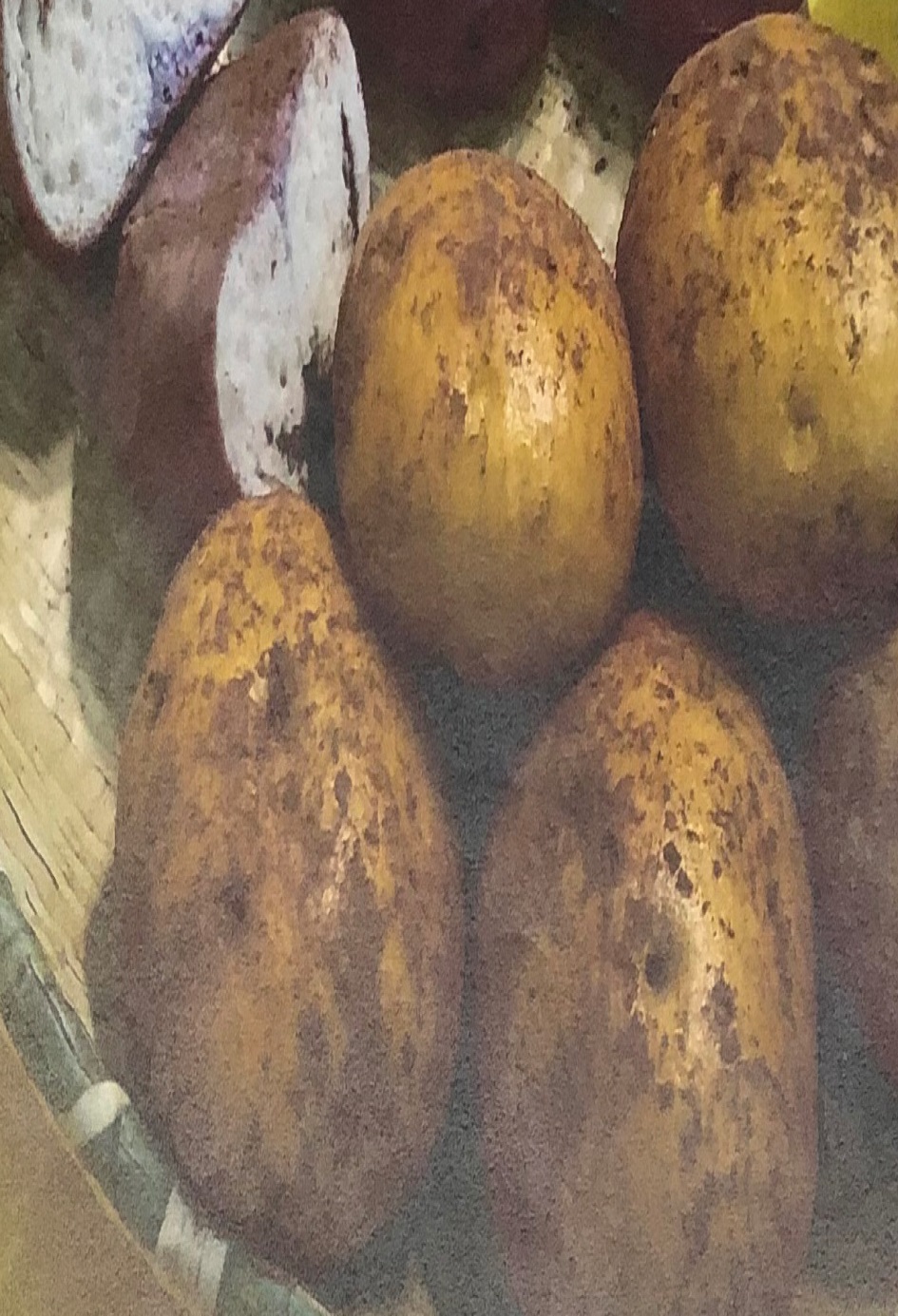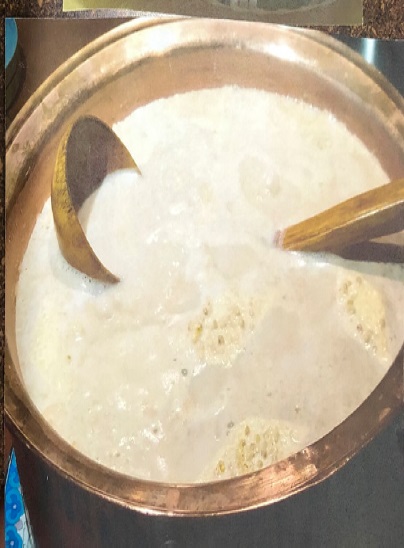|
Read 12982126 times
Connect me to:
|
Ulanqab Foods in Inner Mongoliaby Wang Si
China Correspondent
|
Chinese Ethnic Minorities and Their Foods
Winter Volume: 2019 Issue: 26() pages: 7 to 8
In summer, I attended a food festival in Ulanqab called
the ‘China-Mongolia-Russian Food Culture Festival’.
This eighth annual event had more than two million
locals, others too, wanting to see it in this central area
of the Inner Mongolia Autonomous Region. It borders
on Mongolia, has many connections with them and with
Russia. Now, more than ninety-five percent are Han
moved here with help from the Chinese government.
They encouraged them to do so, and now they love
it. Mainly settled in places known as the Chayouqi
or Siziwanqi Banners; Banners are typical names of
places here, so-named when the Qing Dynasty’s army
controlled this area. Huns swept south and took this area in the third
century BCE. They were a nomadic tribe most likely
from somewhere between the Eastern edge of the Altai
Mountains and the Caspian Sea. Today this is about
where modern Kazakhstan is. Before the Qing Dynasty, there were many ethnic
groups occupying the area here including the Toba,
Xianbei, Tujue, Qidan, Nuzhen, Tatar, Waci, and
Mongolians. All were Northern nomadic folk who have
since either disappeared or ceased to exist after other
groups took over, often one by one. Considered ‘people
on the horse’ and not ‘people in the fields,’ they did
make their living by grazing and hunting. As described
by Sima Qian (145 - 86 BCE) in his Records of the Grand
Historian, they kept moving around seeking water and
grass for themselves and their animals and using them
to make meat and dairy products. In their language, the word chaganyide is their word
for dairy products, literally meaning ‘white foods.’ It
symbolizes ‘pure and holy foods’ while wulanyide
means ‘red foods’ and refers to all meat items. Typical
Mongolian white foods are milk tea, yogurt, fermented
milk curds which are similar to cheeses, milk skin foods,
and horse milk wine called kumis. Their favorite red
foods are mutton and beef; they make and love them
different ways. Of course, urbanization and immigration have impacted
their culture. Ulanqab had and still has many nomadic
food behaviors. The tourism and catering industries
have changed some of them. In the Yellow Flower Valley,
also known as Huitengxile, gorgeous gowns, boots, and
dance horse riding are now somewhat different. Many
of their current ‘local products’ now relate to health,
caring, and exotica. And during this food festival,
roasted whole sheep and other whole roasted animals
were served free for all to taste and enjoy. Locals got
theirs to share, too. Mr. Lang, chairing the Inner Mongolian Association for
Catering and Hospitality, has planned this for eighteen
years; and he invited me to the dinner in the most
popular Mongolian restaurant called Muma Ren in the
central square of the city. It was decorated with many
Mongolian items including a ger which is a Mongolian
tent-like home they usually live in. He and Mr. Yun, a
senior officer, told us their lives have been improved,
their incomes, too, thanks to this corporation and its
annual festival. Last year, Mr. Lang and his association edited a book
about their cuisine. It is titled: Mongolian Meal: The
Ninth Cuisine in China, and was published by Standards
Press of China, its ISBN is 9787506687089. It includes
Mongolian dishes and meals. They proudly showed us
several potatoes and white soup, all pictured below.  
You might ask what is Mongolian cuisine, let me advise
this book defines it as inheriting and innovating
traditional foodways, and integrating food customs
from all ethnic groups in Inner Mongolia. They include
beef, mutton, dairy products, and edible plants from
the grasslands. Its cooking techniques include the ways
they grill, roast, steam, boil, simmer, and pan-fry. It
uses ingredients and methods from other areas of
China, all made and served Mongolian style. Despite
the geographic environment and nomadic foods of
their history, this book has collected and created many
recipes since the Period of Reform and Opening of
China. At Mongolian meals, a tradition is to boil a two-year old
sheep with no salt or seasonings, then add lots of
dried noodles at the meal’s end. The original book was
written by Husi Hui and called Essentials of Dietetics
(Yinshan Zhengyao,1330), Mongolians still enjoy high
protein food including milk tea served in a wooden
bowl with small pieces of milk skin, milk curd, and
crispy millet. Milk skin is a thick layer of solid cream.
Milk curd is a kind of cheese. In recent years, they were ruled by the Han, and
since the Qing Dynasty, locals have added grains and
vegetables, most often potatoes and oats to their foods.
At our Mongolian meal, we learned that this city has
a China Potato Museum and an Oat Museum, and that
both show how these and other foods supplement
Mongolian foods. They have increased people’s health
and the local ecology, been added to Mongolian foods
and they now include dim sum made with potatoes in
them and in their wrappers. Potatoes and/or oats are
also in local pies, local breads, and other local foods.
Boiled lamb is served with soy sauce and chili sauce as
dips and they season their loved local meat with them. |



